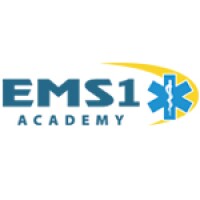The EMS1 Academy features “Medical-Legal Issues, Lesson 2,” a 20-minute accredited course for EMS providers reviewing the legal aspects of competency and documentation. Visit the EMS1 Academy to learn more and schedule a demo.
EMS protocols are the recognized operating procedures that all emergency medical service professionals, such as paramedics and emergency medical technicians (EMTs) must follow for patient assessment, treatment, transportation and delivery to definitive care.
EMS protocols are designed by national, state and local medical authorities and institutions. They are reviewed regularly and revised according to new assessment tools and treatments. When protocols are revised, updated and amended, they are published and distributed to all emergency medical services providers within the jurisdiction. It is the ongoing responsibility of the EMS departments to train all of their providers on the revised protocols. EMS providers also must attend training sessions to stay up-to-date on protocols.
The purpose of EMS protocols is to standardize medical procedures for all emergency medical services and thus provide the highest level of care for patients. Protocols also provide a framework to help EMTs make decisions when assessing and treating a patient. All EMTs and paramedics must follow the protocols or document on the ePCR their rationale for deviating from a protocol. Depending on the jurisdiction the EMT or paramedic may be required to use online medical direction, which is assistance from a higher medical authority, such as a physician or the EMS worker’s medical director, before deviating from a protocol or even to receive permission to perform a specific procedure ina protocol.
Adherence to protocols is monitored through quality assurance and quality improvement efforts. Review of individual patient encounters or aggregating the data from all the patients treated may lead to protocol changes, acquiring different equipment, providing new services, training or education and in some cases individual EMS provider discipline or remediation.
7 EMS protocols reminders
Here are some important reminders about EMS protocols for EMTs and paramedics:
- Obtaining a patient’s history following a standardized primary and secondary assessment process is the starting point to any protocol. Life-threatening problems such as cardiac arrest are treated as they are found. But most patients are awake and can be fully assessed before a treatment plan is initiated.
- The cause of the patient’s problem may dictate the protocol that is used to treat the patient. For example, traumatic cardiac arrest won’t respond to the treatments used for cardiac arrest secondary to myocardial infarction.
- Use a procedure to accomplish the treatment goal. If the patient assessment determines a patient needs fluid many protocols will direct paramedics to attempt two IV insertions before considering intraosseous access. Though some protocols will make IO access the first-line treatment or give the paramedic discretion to chose IV or IO.
- Patient transportation is a treatment and should be prioritized based on patient severity and need. Definitive care for penetrating chest trauma is surgical care and protocols rarely delay transport for IV insertion or endotracheal intubation. Instead, those procedures are either performed en route to the hospital or BLS airway management techniques are used.
- Online medical direction or medical control is a resource that EMTs and paramedics may consult during patient assessment and care. Not every protocol needs verbal orders, but when medical control orders are needed it’s a good habit to repeat all orders received before the orders are initiated.
- Patient assessment is a continuous process. Continue to monitor a patient’s vital signs and chief complaint throughout assessment, treatment and transport. For patients with severe complaints, use a cardiac monitor for continuous patient monitoring. Use changes in the patient’s vital signs, chief complaint and pain rating to adjust the patient’s treatment plan.
- If the patient’s condition doesn’t conform to standard protocol, contact medical control with the patient findings and instruction.
By following EMS protocols, paramedics and EMTs are ensuring they’re performing their duties to the best of their ability within the parameters of recognized standards.
This article was originally posted on March 5, 2011. It has been updated.














